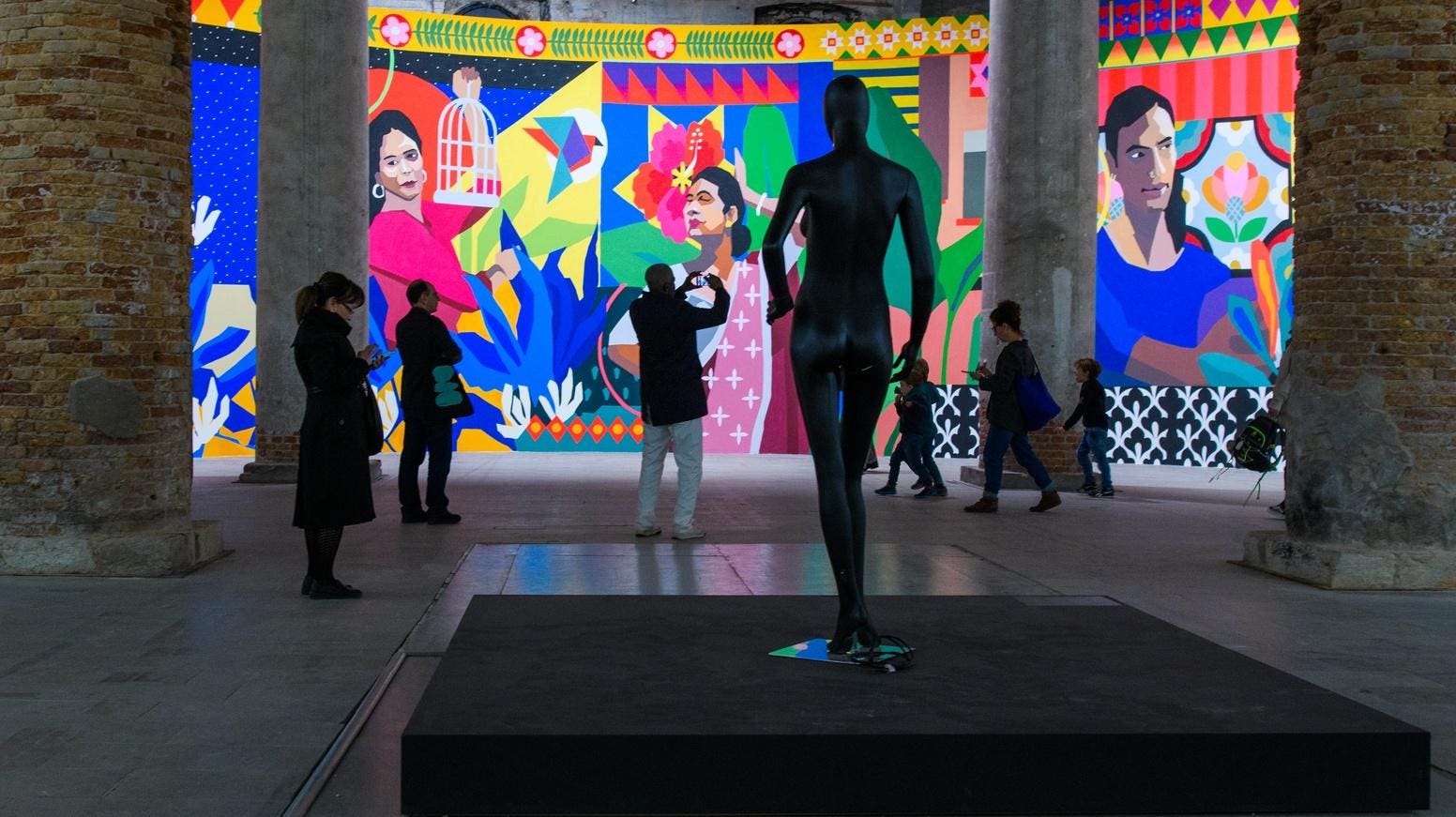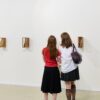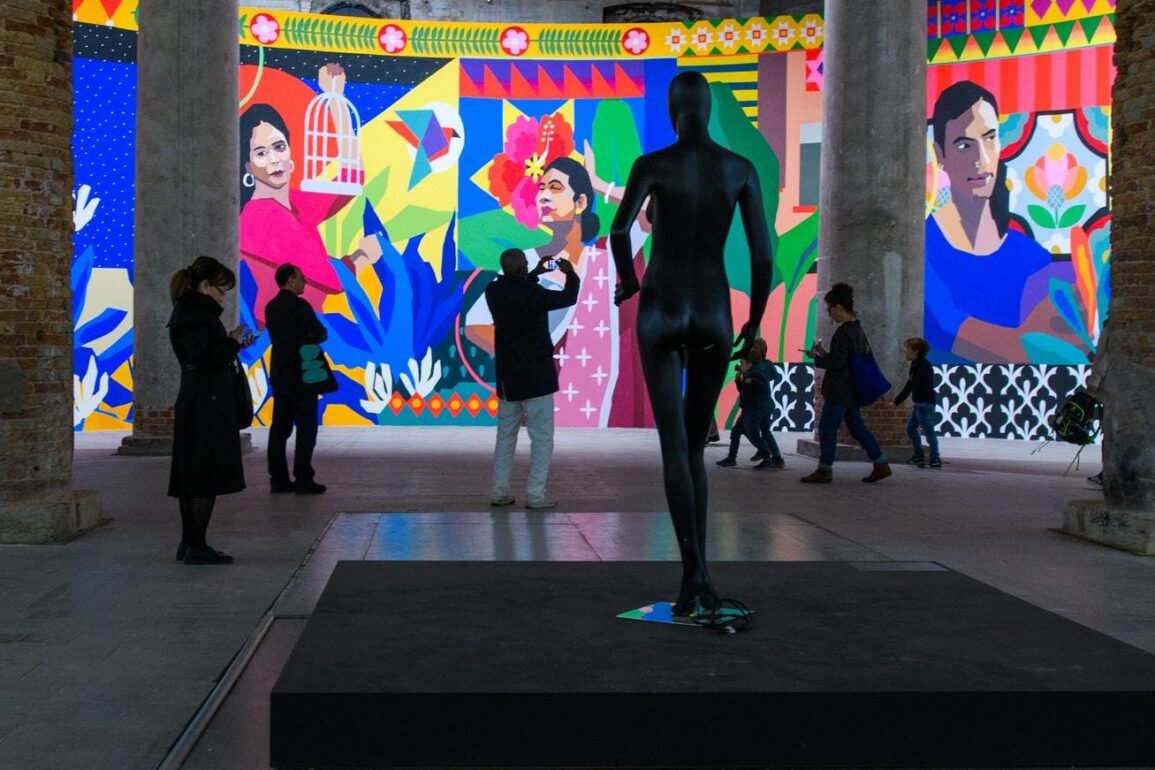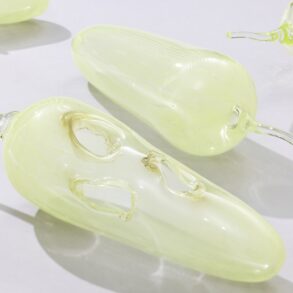
Italy has long been a global hub for artistic innovation, its influence spanning centuries from the grandeur of Renaissance frescoes to the conceptual boldness of Arte Povera, radical Italian art movement from the late 1960s to 1970s whose artists explored a range of unconventionality. Events like the Venice Biennale underscore the country’s role in shaping the trajectory of contemporary art. From Simone Leigh’s powerful sculptures to Sonia Boyce’s exploration of Black identity, mark a shift toward voices that challenge historical norms and amplify diverse perspectives. Within this dynamic, a rising generation of Italian women artists are crafting work that firmly sets Italian contemporary art within global discourses.
WINDSOR, ENGLAND – MAY 22: Professor Dame Sonia Boyce after being made a Dame Commander by the Prince of Wales at Windsor Castle, on May 22, 2024 in Windsor, England. (Photo by Andrew Matthews – WPA Pool/Getty Images)
Getty Images
Among these rising artists are Irene Coppola, who explores humanity’s fractured relationship with nature through organic materials; Silvia Rosi, who reconstructs her family’s migration story through self-portraiture; Marta Roberti, who reimagines myth and metamorphosis; Camilla Alberti, who merges art and science in intricate installations; Sara Leghissa, who transforms public spaces into forums for activism; Elena Mazzi, who investigates the intersection of landscape and memory; and Rosana Auqué, whose ephemeral balloon art reflects the delicate balance of life.
ROME, ITALY – OCTOBER 25: A visitor looks at the art installation “Teacher Don’t Teach Me Nonsense” by Silvia Rosi during the Maxxi Bvlgari Prize at Maxxi Museum on October 25, 2022 in Rome, Italy. (Photo by Elisabetta Villa/Getty Images for MAXXI)
Getty Images for MAXXI
Their practices bridge tradition and innovation, reflecting the urgency of present-day concerns without losing sight of Italy’s deep artistic heritage. This interplay between past and present, local and global, is redefining what it means to create art in a country often seen as a living museum.
Identity, Nature, and the Power of Memory
For many of these artists, their practice is a means of exploring fundamental questions about personal and collective identity, as well as humanity’s relationship with the natural world.
Irene Coppola’s art moves beyond representation, becoming a tactile reminder of humanity’s connection to—and responsibility for—the environment.
Courtesy of Irene Coppola
Irene Coppola exemplifies this approach, integrating organic materials such as soil and plants into her sculptures and installations. Her works serve as quiet meditations on ecological imbalance, inviting viewers to consider their roles within fragile ecosystems. Coppola’s art moves beyond representation, becoming a tactile reminder of humanity’s connection to—and responsibility for—the environment.
Photographer and performance artist Silvia Rosi brings a deeply personal lens to her work. Born to Togolese immigrants, Rosi explores her family’s migration story, focusing particularly on her mother’s experiences. Through self-portraits in which she inhabits her mother’s persona, Rosi reconstructs moments of labor and resilience, offering a nuanced reflection on diaspora, race, and heritage in contemporary Europe.
Photographer and performance artist Silvia Rosi brings a deeply personal lens to her work. Born to Togolese immigrants, Rosi explores her family’s migration story, focusing particularly on her mother’s experiences.
Courtesy of Sylvia Rosi
Similarly, Marta Roberti navigates themes of transformation and mythology. Her multimedia works draw from feminist theory and ancient narratives to explore metamorphosis, such as humans becoming animals and vice versa. By blurring the boundaries between the human and the mythological, Roberti encourages a reevaluation of gender, identity, and the body’s place in the natural world.
Science, Public Space, and Collaboration
Other artists are bridging art with science, public engagement, and geographical storytelling, expanding the scope of what contemporary art can encompass.
Camilla Alberti’s installations often evoke the atmosphere of a scientific laboratory, blending elements of biology, ecology, and speculative fiction. Through intricate arrangements of plants, minerals, and animal specimens, Alberti draws attention to the interconnectedness of natural systems and the precarious balance that sustains them. Her work serves as a quiet call to wonder and preservation.
The Spell of Monsters by artist Camilla Alberti.
Courtesy of MOKA
Sara Leghissa takes a different approach, using public performance to explore themes of individual agency and collective action. By situating her art in streets and public spaces rather than traditional galleries, Leghissa invites communities to engage directly with her work. This participatory model of art challenges conventional notions of spectatorship, turning public spaces into forums for dialogue on autonomy and activism.
Artist Elena Mazzi focuses on the intersection of landscape and memory. Her video and installation works examine how natural and human histories intertwine in specific locations, shaping and being shaped by the environment.
Courtesy of Elena Mazzi
Elena Mazzi focuses on the intersection of landscape and memory. Her video and installation works examine how natural and human histories intertwine in specific locations, shaping and being shaped by the environment. By grounding her work in the physicality of place, Mazzi opens up new ways of thinking about how geography informs identity and collective experience.
Rosana Auqué: Balancing Ephemerality and Depth
Among these diverse voices is Rosana Auqué, known as “the balloon girl,” for her unique use of balloons as symbols of fragility and resilience, control and chaos, the beauty of impermanence, and the interconnectedness of all living things. This ephemeral medium becomes a metaphor for human existence—the essence of life.
Artist Rosana Auqué, known as “the balloon girl,” for her unique use of balloons as symbols of fragility and resilience, control and chaos, the beauty of impermanence, and the interconnectedness of all living things.
Courtesy of Rosana Auqué
In the form of a painting, Auqué’s balloons found a place in the prestigious Pananti art gallery in Florence, once again highlighting a contrast between the iconic nature of the format and the weightlessness of the subject that propels us to greater heights. This interplay also invites viewers to reflect on the balance between art’s profound meaning and its playful essence.
Auqué takes this concept further by transforming the burst of the balloon into a moment of rebirth: when the balloons explode, they reveal colorful flowers and landscapes. Now based in Manhattan, her work has garnered significant attention, culminating in her first solo exhibition in New York City at the Italian Cultural Institute opening on December 16th, 2024.
Artist Rosana Auqué, known as “the balloon girl,” for her unique use of balloons as symbols of fragility and resilience, control and chaos, the beauty of impermanence, and the interconnectedness of all living things.
Courtesy of Rosana Auqué
Her perspective is also shaped by her interest in fashion, which she views as an equally dynamic field where creativity and reinvention coexist with a strong sense of identity. Staying true to her core concept, characterized by boundless optimism, she confessed that she plans to “fill the Manhattan sky with balloons full of soul.”
A Contemporary Evolution
While Italy’s art scene is often associated with its historical legacy, these artists are reshaping its narrative for the present. By addressing critical issues of identity, ecology, and social engagement, they demonstrate that Italy’s artistic relevance extends beyond its storied past.
Rosana Auqué’s balloons found a place in the prestigious Pananti art gallery in Florence, once again highlighting a contrast between the iconic nature of the format and the weightlessness of the subject that propels us to greater heights.
Courtesy of Rosana Auqué
This emerging generation represents a broader evolution in how art is conceived and practiced, one that integrates traditional and experimental approaches while engaging directly with the challenges of today’s world. Through their work, Coppola, Rosi, Roberti, Alberti, Mazzi, Leghissa, and Auqué illustrate how Italian art continues to evolve—not by looking back, but by tackling the complexities of the present and imagining the possibilities of the future.
This post was originally published on this site be sure to check out more of their content








